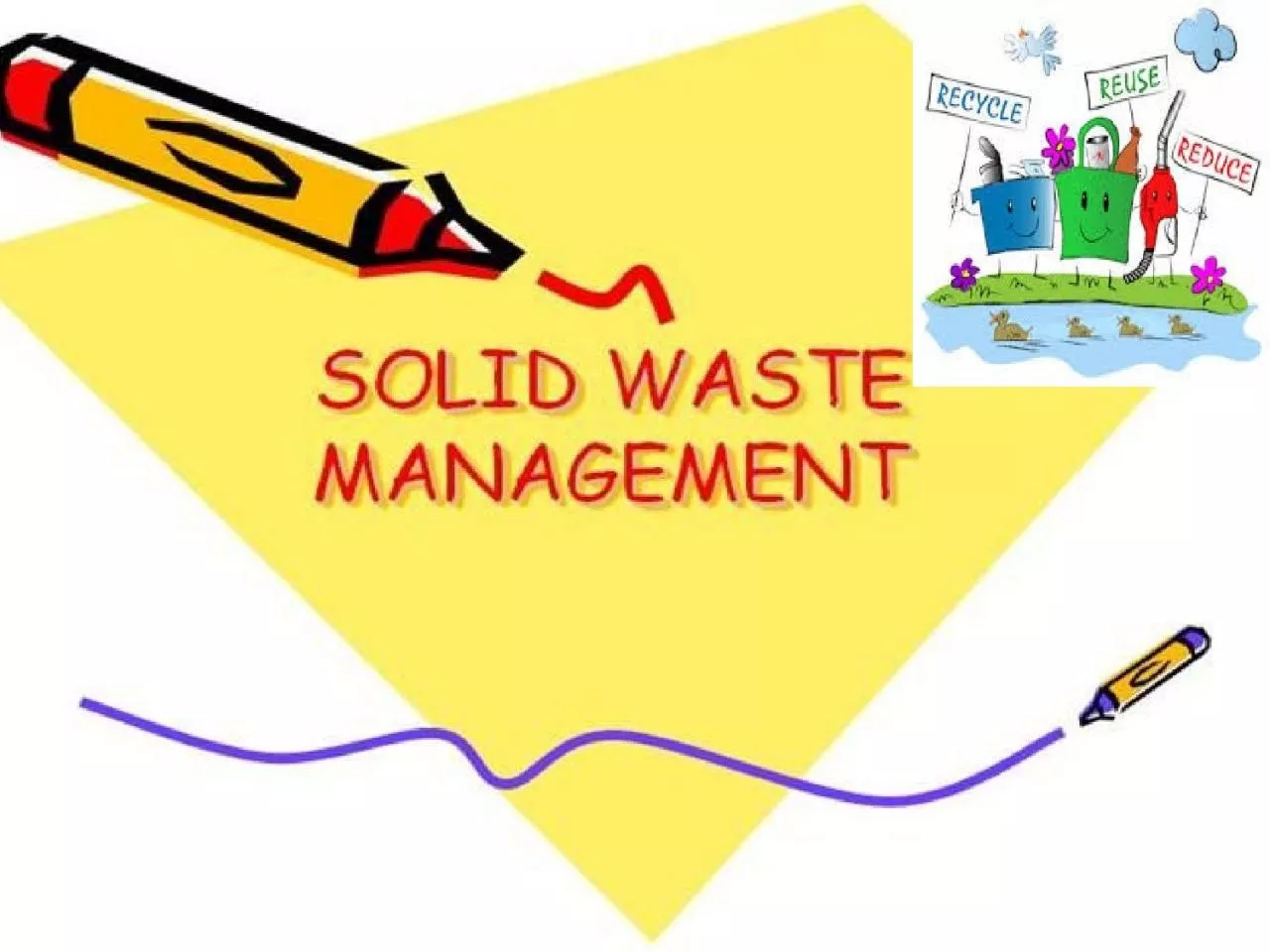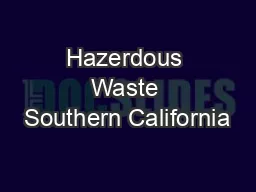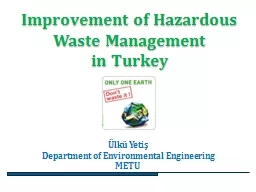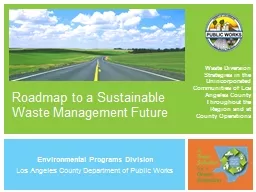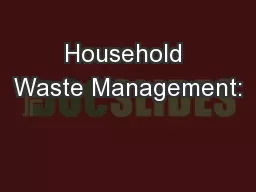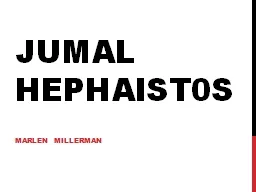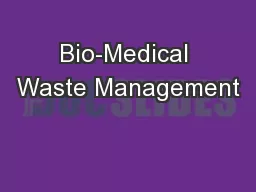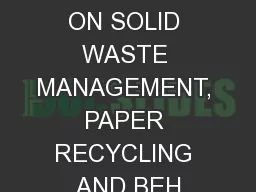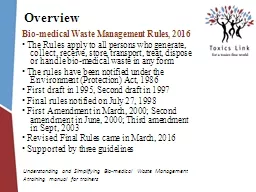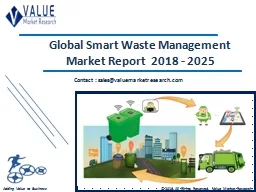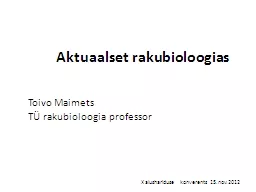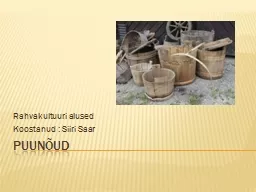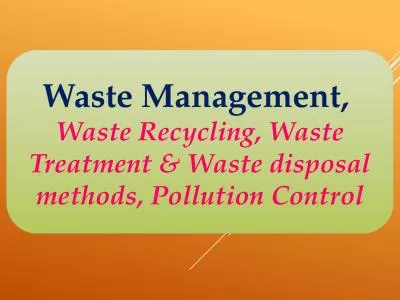PPT-S olid waste management waste
Author : cora | Published Date : 2023-11-23
It is defined as Waste also known as rubbish trash refuse garbage junk is any unwanted or useless materials OR Any materials unused and rejected as worthless or
Presentation Embed Code
Download Presentation
Download Presentation The PPT/PDF document "S olid waste management waste" is the property of its rightful owner. Permission is granted to download and print the materials on this website for personal, non-commercial use only, and to display it on your personal computer provided you do not modify the materials and that you retain all copyright notices contained in the materials. By downloading content from our website, you accept the terms of this agreement.
S olid waste management waste: Transcript
Download Rules Of Document
"S olid waste management waste"The content belongs to its owner. You may download and print it for personal use, without modification, and keep all copyright notices. By downloading, you agree to these terms.
Related Documents

